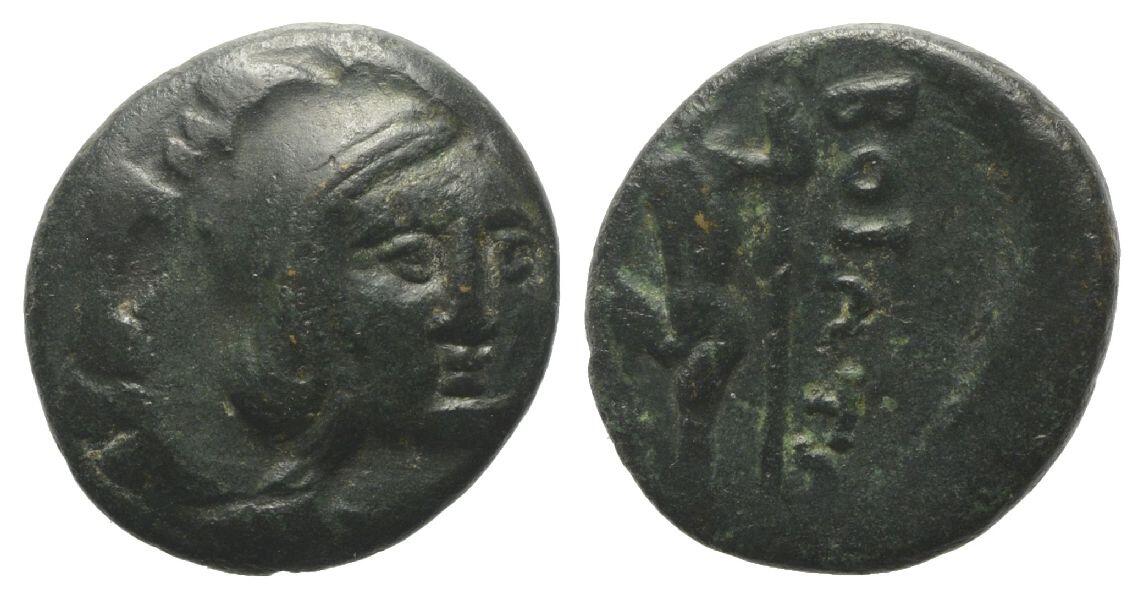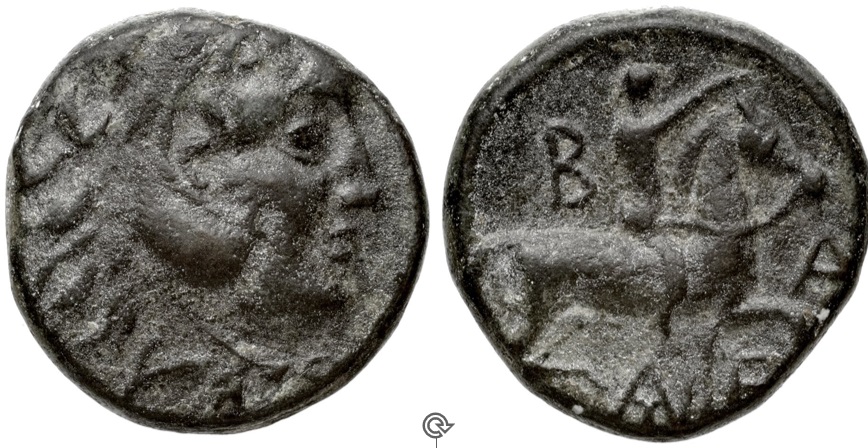225 BCE - 215 BCE | BOIΩTΩN
Overstriking coin
Boeotian_League_Solidus.jpg
[1]
Overstruck variety
Antigone gonatas heracles rider.jpg
[2], [4]
|
|
Sale(s)Sale(s) ᵖ:
|
Herbert Grün, 64, 20 Nov. 2014, 613 = Solidus Numismatik, 85, 21 Sept. 2021, 228
|
| Private collection(s)Private collection(s) ᵖ:
|
Peter Robert Franke coll.
|
|
Description
| ObverseInscription or printing placed on the obverse.:
|
Head of Demeter or Kore (Persephone) face slighty right, wearing wreath of grain-ears
|
ReverseInscription or printing placed on the reverse.:
|
BOIΩTΩN (Greek) Poseidon standing left, resting foot on rock and leaning on trident
|
Mint and issuing power
| MintIdentifies the place of manufacture or issue of a numismatic object.:
|
Boeotia (uncertain mint)
|
Ancient regionAncient region.
|
Boeotia
|
Modern countryModern country: Greece
|
AuthorityIdentifies the issuing power. The authority can be "pretended" when the name or the portrait of X is on the coin but he/she was not the issuing power. It can also be "uncertain" when there is no mention of X on the coin but he/she was the issuing power according to the historical sources:
|
Boeotian league
|
Chronology
| FromIdentifies the initial date in a range assigned in a numismatic context. 225 BCE toIdentifies the final date in a range assigned in a numismatic context.. 215 BCE
|
Hellenistic 323-30 BC  periodTime period of the numismatic object. periodTime period of the numismatic object.
|
Physical description
MetalThe physical material (usually metal) from which an object is made.: Bronze 
|
WeightWeight of the numismatic object (in grams). in grams: 4.034.03 g <br />4,030 mg <br />
|
|
|
| DiameterDescribes diameter of an object (in mm).: 1818 mm <br />1.8 cm <br />
|
|
References
Description
| ObverseInscription or printing placed on the obverse.:
|
Herakles head r.
|
ReverseInscription or printing placed on the reverse.:
|
horseman, nude, crowning his horse
|
Mint and issuing power
Chronology
| FromIdentifies the initial date in a range assigned in a numismatic context. 277 BCE toIdentifies the final date in a range assigned in a numismatic context.. 239 BCE
|
Hellenistic 323-30 BC  periodTime period of the numismatic object. periodTime period of the numismatic object.
|
Physical description
References

